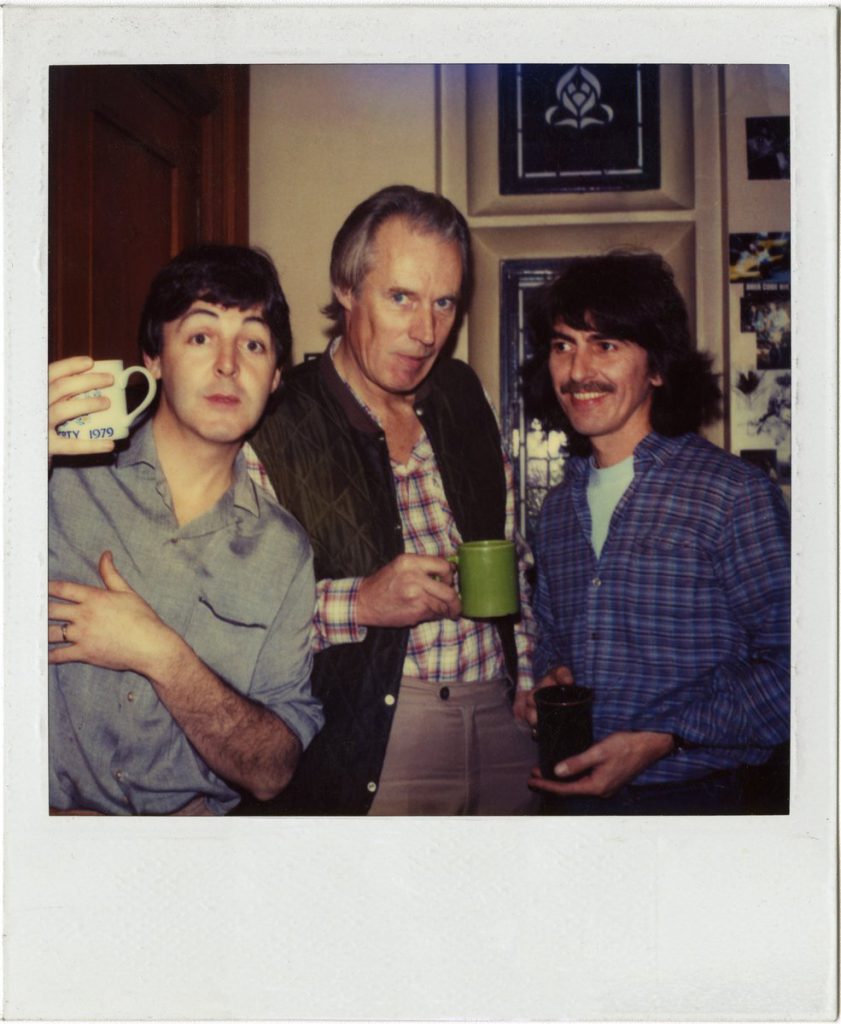- UK release date:
- Jun 05, 1981
- US release date:
- Jun 01, 1981
Timeline
More from year 1981
Related sessions
This album has been recorded during the following studio sessions
Overdubs for "All Those Years Ago"
March / April 1981 ?
Spread the love! If you like what you are seeing, share it on social networks and let others know about The Paul McCartney Project.
Hide track details
Track list
Disc 1
1.
Blood from a Clone
4:03 • Studio version
2.
Unconsciousness Rules
3:05 • Studio version
3.
Life Itself
4:25 • Studio version
4.
Written by George Harrison
3:42 • Studio version • A
- Paul McCartney :
- Backing vocals
- Linda McCartney :
- Backing vocals
- Denny Laine :
- Backing vocals
- Ringo Starr :
- Drums
- George Harrison :
- Backing vocals, Electric guitars, Producer, Synthesizer, Vocals
- Phil McDonald :
- Recording engineer
- Herbie Flowers :
- Bass
- Ray Cooper :
- Producer, Tambourine
- Al Kooper :
- Electric piano
- Recording :
- November 19th-25, 1980
- Studio :
- Friar Park, Henley-on-Thames, UK
- Session Overdubs:
- March / April 1981 ?
- Studio :
- Friar Park Studio, Henley-on-Thames, UK
5.
Baltimore Oriole
3:57 • Studio version
6.
Teardrops
4:07 • Studio version
7.
That Which I Have Lost
3:47 • Studio version
8.
Writing's on the Wall
3:59 • Studio version
9.
Hong Kong Blues
2:55 • Studio version
10.
Save the World
4:54 • Studio version
About
From Wikipedia:
Somewhere in England is the ninth studio album by English musician George Harrison, released in June 1981 by Dark Horse Records. The album was recorded as Harrison was becoming increasingly frustrated with the music industry. The album’s making was a long one, during which conflicts with Warner Bros. Records arose. Somewhere in England was the first Harrison album to be released after the murder of his former Beatle bandmate John Lennon; the lyrics of its first single, “All Those Years Ago“, pay tribute to Lennon.
Recording
Harrison began recording Somewhere in England in March 1980 and continued sporadically, finally delivering the album to Warner Bros. Records, the distributor of his Dark Horse record label, in late September that year. However, the executives at Warner Bros. rejected the album, feeling it was “too laid back” and not sufficiently commercial. Harrison agreed to rework the album and to record new material. Harrison’s original cover art, featuring his profile against a map of Great Britain, was also vetoed by Warner Bros.
Returning to the project in November, Harrison was joined in his Friar Park studio in Henley-on-Thames by Ringo Starr, who arrived specifically to have Harrison produce some songs for him. They recorded two Harrison originals – “Wrack My Brain” and “All Those Years Ago” – plus a cover of “You Belong to Me” for Starr’s album Can’t Fight Lightning (later released as Stop and Smell the Roses). The two other songs were completed but “All Those Years Ago” was left unfinished. Starr later admitted that the key was too high for him to sing.
On 8 December 1980, John Lennon was shot dead outside his apartment building, the Dakota. After the shock and devastation of Lennon’s murder, Harrison decided to utilise the unfinished recording of “All Those Years Ago”. He changed the lyrics of the song to reflect the Lennon tragedy. With Starr’s pre-recorded drum track in place, Harrison invited Paul and Linda McCartney, and their Wings bandmate Denny Laine, to record backing vocals in early 1981.
Along with “All Those Years Ago”, three more songs were added to the album: “Blood from a Clone” (a criticism of the WB executives who had rejected his original album), “Teardrops” and “That Which I Have Lost”. To make room for the new songs, Harrison elected to drop four tracks from the original line-up: “Tears of the World”, “Sat Singing”, “Lay His Head” and “Flying Hour”. A new cover was then shot in the Tate Gallery in London, and Somewhere in England was resubmitted and accepted.
Reception
“All Those Years Ago” was released as the lead-off single in May 1981 to a strong response, reaching number 13 in the United Kingdom and number 2 in the United States. It was Harrison’s biggest hit since “Give Me Love (Give Me Peace on Earth)” in 1973, and Somewhere in England benefited from the song’s popularity. The album peaked at number 13 in the UK, giving the artist his highest-charting album there since 1973, and number 11 in the US.
Somewhere in England‘s chart run was relatively brief in America, however, and it became Harrison’s first album since the Beatles’ break-up not to reach gold status there. The second single, “Teardrops”, peaked at only number 102 on Billboard‘s singles listings.
Reviewing the album favourably in 1981, People magazine called it one of Harrison’s best and highlighted the “moving” tribute to Lennon. Robert Christgau was less receptive in The Village Voice, dismissing the songs as “sappy plaints”. He applauded “All Those Years Ago” as Harrison’s “catchiest tune in years”, however, although he said that Lennon had yet to comment from the grave on the album sleeve’s Krishna-esque message of eternal life. […]

Last updated on January 26, 2020

Contribute!
Have you spotted an error on the page? Do you want to suggest new content? Or do you simply want to leave a comment ? Please use the form below!